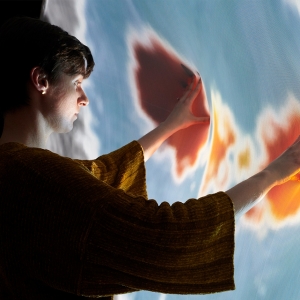
Female deities are revered in many different traditions throughout the Himalayas. While these traditions are not necessarily feminist by contemporary standards, they feature a range of beloved goddesses, bodhisattvas, and dakinis that reflect fascinating ideas about feminine power and have inspired people across time and cultures.
The Energy of the Many-Formed Goddess

Hinduism, the most prevalent religion in India and Nepal, is known for its millions of gods of diverse origins, forms, and abilities, with an equal multiplicity of goddesses. They embody compassionate as well as fearsome forces: Lakshmi delivers good fortune, Parvati embodies the Himalayas and ascetic practice, Sitala cures smallpox and other childhood diseases, Durga fiercely slays the buffalo demon and negative forces, and Kali is even more terrifying. One could not name every goddess in a lifetime.
Hindus often choose a single deity to worship as supreme and encompassing other divine forms. The Shaktas, for example, worship the goddess Devi. The Shaktas are so named because of the goddess’s shakti, the feminine power, capacity, or energy that is behind the universe, without which the male gods would be inert. Shaktas are not necessarily feminists, and rulers sought to obtain shakti for the sake of political dominion.
In Nepal, little girls are recognized as Kumari and worshipped in temples as living goddesses. This was especially important to the country’s former monarchy. Historically, rulers throughout India patronized Durga as a goddess of war and popularized the Navaratra festival of nine nights of worship.
Women and Buddhist Awakening (Bodhisattvas)

Buddhists have sometimes debated whether a woman can achieve awakening, but the Buddha clearly answered in the affirmative, according to a story found in the Vianaya. When the Buddha’s aunt Mahaprajapti, tried to convince the reluctant Buddha to ordain nuns, she asked the Buddha whether women who renounce domestic life and devote themselves to the Buddhist path can attain nirvana. The Buddha said that they can, so he set up the bhikshuni (nun’s) order of the sangha. However, he prophesied the demise of the dharma and placed heavy restrictions on the nuns.
In Mahayana Buddhism there was a tradition that only men could become awakened to full buddhahood. The Vimalakirti Sutra challenges this notion in its portrayal of an enlightened goddess, who befuddles the skeptical disciple Shariptura by changing him into a woman and herself into a man. Whether or not this story is meant to convey a feminist message, it demonstrates the power of the Mahayana teaching to overcome such empty dualities as gender.
Mahayana Buddhism has a number of female buddhas and bodhisattvas. Tara is among the most popular of these in Tibet, revered for her powers of salvation, protection, healing, and ability to accomplish all Buddha activities. In one story of her origins, she vowed to become a buddha in a female form, proclaiming the emptiness of gender.
The Tantric Power of the Dakini

Tibetan Buddhism, following the tantric practices of the Vajrayana, considers sexuality to be part of Buddhist path, not as a cause of harmful attachment but as a way to create body and mind. Some Tibetan traditions therefore offer more opportunities for non-celibate practitioners beyond the confines of monasteries, which offered few opportunities for women in Tibet. There is a debate among scholars whether tantra actually improved the status of women, since male practitioners remained dominant, but there are many examples of female power in Tantric Tibetan Buddhism.
Tibetan Buddhists revere female spiritual beings known as dakinis, who teach and guide practitioners to awakening, and tantric practitioners are required to respect and not disparage women. Female deities in tantra are not only consorts of male deities. The dakini Vajrayogini embodies the wisdom of all buddhas, and her visualization and practice is reserved for the most advanced tantric initiates. On a more human level, a number of Tibetan women rose to prominence for their tantric teachings, particularly Machik Lapdron who originated the practice of cho (“cutting off”). Her practice, revered across traditions, emphasizes generosity and freedom from ego-clinging through visualizations of offering the body to demons.
Hero Image Credit
Kaumari; Nepal; 17th or 18th century; gilt copper alloy with semiprecious stone inlays; Rubin Museum of Art;C2006.44.1 (HAR 65693)
Add Your Thoughts
Comments are moderated, and will not appear on this site until the Rubin has approved them.



